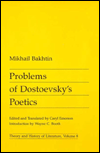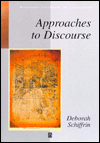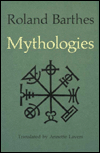
Introduction
Fyodor Dostoyevsky's The Double traces the process of
psychological breakdown that can occur when the formation and use
of common social knowledge goes awry. To reveal how the novel's
main character struggles to organize and use what to everyone
else is common social knowledge,
Because of the attention that writings of Dostoyevsky, especially
The Double, give to the organization and use of
common social
Among Dostoyevsky's corpus, the ethnomethodoligcal appeal of
The Double stems from the author's meticulous attention to how
Golyadkin tries to develop a sense of common social knowledge and
use it to establish a place for himself in the
Donald Fanger, a literary theorist speaking almost in the
tones of ethnomethodology, offers a justification for choosing to
apply ethnomethodology to a novel in the tradition of romantic
realism: "The emphasis accorded
Given this general nature of Dostoyevsky's novel, the aim of
this essay is to use an ethnomethodological analysis of The
Double to investigate how Golyadkin struggles to understand the
social order and situate himself in it. In particular, I seek to From the Individual to the SocialDostoyevsky's characters are not only of individual and psychological dimensions, but of social dimensions too. George Lukacs, commenting on Balzac's heightening of character, makes an observation that applies equally to Dostoyevsky, who like Balzac is writing in the tradition of romantic realism: "What he did was to depict the typical characters of his time, while enlarging them to dimensions so gigantic ... [that they] can never pertain to single human beings, only to social forces."5 Dostoyevsky, in his preface to Notes from Underground, acknowledges that he is doing as much:
As such, Dostoyevsky's novels show how participants come to understand themselves in relation to the social order of their time and place. For Dostoyevsky, understanding, or misunderstanding as the case may be with Golyadkin, is of central concern. And that understanding is revealed through the dialogic intermingling of social voices, taken as social forces. Though ascribed to various individuals in his novels, the understanding revealed through the polyphony of voices always remains linked to the social order. Bakhtin puts it thus: As an artist, Dostoyevsky did not create his ideas in the same way philosophers or scholars create theirs -- he created images of ideas found, heard, sometimes divined by him in reality itself, that is, ideas already living or entering life as idea- forces. Dostoyevsky possessed an extraordinary gift for hearing the dialogue of his epoch, or, more precisely, for hearing his epoch as a great dialogue, for detecting in it not only individual voices, but precisely and predominantly the dialogic relationship among voices, their dialogic interaction.7
Garfinkel's View of Understanding
For
Golyadkin, whose own social activities are rather unstable,
is at a loss to understand his social circumstances, even before
he is confronted with his own double, which of course only
further destabilizes the social order. But, ironically, it seems
as if Golyadkin's double becomes the mechanism by which he seeks
to return social order to his unstable world, much like Agnes did
in her world by invoking the mechanism that Garfinkel calls
passing. At any rate, the novel chronicles Golyadkin's attempts
to find a sense of order in his world, to interpret and
understand his own social
Indeed, Golyadkin's invocation of his double as a mechanism
to establish order and normalcy to his unstable social existence
mirrors Agnes's use of passing, defined by Garfinkel as "the work
of achieving and making secure her rights to live as a normal,
natural female while having continually to provide for the
possibility of detection and ruin carried on within socially
structured conditions."9 Golyadkin's passing may be of an even
more fundamental sort: Unlike Agnes, he is working not to secure
his rights to live as a normal, natural female (or male) but to
live as a normal, natural human despite his madness. Or, to be a
bit more generous to Golyadkin, he is merely working to achieve
and secure a certain social status in society. Either way,
throughout The Unclear and the Undistinct
From the first pages of the novel, set in St Petersburg in 1846,
Golyadkin, as he struggles to understand his world and his
relation to it, is not entirely sure what is real
The uncertainties that Golyadkin faces in this except -- for
instance, about whether he is asleep or awake, dreaming or not,
in St Petersburg or a province -- characterize the theme of the
novel and culminate in Golyadkin's, and indeed the reader's,
uncertainty about whether his double is real. These
uncertainties, many of them social, are also used to undermine
the Cartesian axiom of "I think, therefore I am" by recasting it
in relation to the social. The version of cognito ergo sum that
takes shape in The Double parodies Descartes's; it is, "I think
double thoughts, therefore I am twofold."
Dostoyevsky's reaction against Cartesian thought places the
emphasis on the individual surrounded by others, rather than the
disembodied Cartesian ego -- a move that also takes place in the
work of The Double as Social ObjectThe question I am raising about The Double, then, is not only directed toward the general concern of how Dostoyevsky creates the social order in the novel, but also how Golyadkin junior -- the double -- is constructed as a social object. If we are to take at full value Bakhtin's observation of Dostoyevsky as the creator of the polyphonic novel, that is, if we are to acknowledge with Bakhtin that the force of Dostoyevsky's artistry lies in releasing his characters from his own control, thereby leaving them to endow themselves with lives, courses of action, and, above all, voices of their own, quite independent of the author's overt control, then the first certainty is that Dostoyevsky does not create Golyadkin's Double. Golyadkin does. Part of the impetus for Golyadkin's split, as I will make apparent, lies in his contradictory thoughts and actions, in his swift and frequent changes of mind, in his double thoughts, often exemplified in his inner dialogue with himself:
The above quotations point to the primary driving force behind Golyadkin's split: social anxiety. In encountering his boss in the street, Golyadkin is unsure whether to greet him or not, as the last of the above quotes reveals. In response to the excruciating social anxiety he feels, Golyadkin takes refuge in a denial of the self at the same time that he acknowledges his supervisor:
At issue in an ethnomethodological analysis of The Double
are the categories or techniques that Golyadkin uses to make
sense of (or to misinterpret) his interaction with Philippovich
and others. Especially important are the categories or techniques
from which his double is constructed. Ethnomethodologists argue
that "the proper Categories and TechniquesThe first pattern, already apparent from the above passages, is the indecision, uncertainty, and double thoughts that Golyadkin has when faced with a social situation; this indecision, and its accompanying double thoughts, both of which often result in self-contradictory behavior or utterances, mark his confrontation in the second chapter with not only Philippovich but also Doctor Christian Ivanovich Rutenspitz. The uncertainty, indecision, double thoughts, and the self-contradictions in social behavior and utterance to which they give rise are, it seems, the primary categories from which Golyadkin junior is constructed, as will become increasingly apparent in the course of my analysis.
Indecision and uncertainty underlie Golyadkin's reasoning
over whether he should visit Dr. Rutenspitz. The heightened
After entering the doctor's quarters, Golyadkin continues his struggles to find postures appropriate to the social situation. He is, in effect, conducting an open negotiation of social position with the doctor, at this point mostly through gesture, expression, and posture. In the exchange, Dostoyevsky makes clear that Golyadkin commits a series of deviations from accepted social practice that culminate in Golyadkin staring at the doctor, a final solecism through which, Dostoyevsky writes, Golyadkin conveys his independence:
Although more detached than usual from Golyadkin's internal dialogue, the passage, which continues to emphasize Golyadkin's uncertainly and indecision about what to do in social situations, reveals several additional categories through which he begins to construct his double as social object apart from himself. One of them is revealed by Golyadkin's "challenging stare." It simulates independence; as Dostoyevsky says, Golyadkin uses it to imply that he is his own master, in contrast to being controlled by others or even by the social situation. (In contrast, later in the book Golyadkin junior often sneers at the appearance of Golyadkin senior. Examples of this posture abound: "`Well, sir?' asked Mr Golyadkin junior, facing Mr Golyadkin senior with some insolence"18; "Mr Golyadkin junior glanced ironically at Mr Golyadkin senior, thus openly and impudently flouting him."19 Golyadkin senior's displeased glances upon seeing Golyadkin junior contrast with the latter's mischievous, fraudulent smiles toward the former.) As alluded to in the excerpt above, a second category that Golyadkin uses to interpret his interactions is the notion of enemy: Golyadkin, obsessed with his own unstated enemies, frequently aspires to categorize his interlocutor as friend, neutral, or nemesis. For instance:
Psychotherapeutic ConversationThe psychotherapeutic conversation that Golyadkin next has with Dr. Rutenspitz reveals additional categories through which Golyadkin attempts to make sense of social interaction, establish his social position, and eventually construct his double as a mechanism for stabilizing the social order. This interaction, however, is complicated by the possibility that Golyadkin's words are directed not so much toward Rutenspitz but toward the reflection of his own alter-ego, which takes the form of Rutenspitz. In speaking with Ivanovich, Golyadkin engages in a metaphorical dialogue with his other self. That is, the voice of Golyadkin's selves can be heard in the speech of both him and Ivanovich. Their conversation foreshadows Golyadkin's split into the anxious, socially dysfunctional Golyadkin and the well- poised, socially successful Golyadkin junior. In the passage, Golyadkin primarily represents the voice of Golyadkin senior (henceforth simply Golyadkin), while Ivanovich's speech represents the partially objectified voice of Golyadkin junior -- objectified because it is, at least in comparison to the discourse of Golyadkin, authoritative and monologic. Ivanovich, in contrast to Golyadkin, projects a relatively nonhybridized, fixed voice. Ivanovich, then, represents an early objectified version of Golyadkin's well-socialized double. As will become apparent during the micro-analysis below, his speech contains a "predominance of socio-typical determining factors."22 Golyadkin's speech, on the other hand, is polyphonic, containing the traits of what Bakhtin calls active discourse: It has, for instance, "hidden internal polemics" and "polemically colored autobiography and confession."23 It is "discourse with a sideways glance at someone else's word.24" In the Ivanovich-Golyadkin passage, Golyadkin's sideways glance is directed toward the reflection of his own alter-ego, which takes the form of Ivanovich. During Golyadkin's psychotherapeutic conversation with Dr Rutenspitz, a set of social categories come to the fore. One of the categories used by Golyadkin is sameness. As he engages in social situations, including the one with the doctor, one of his mantras is that "he was like everyone else."25 Another is independence: "I go my own way"; "I am a man apart"; "I don't depend on anybody."26 A third is that he can't shine in society and hasn't learned social tricks: "I am not a master of eloquence"; "in society, ... you must learn how to polish the parquet with your shoes [etc.] ... and I've not learned to do all that."27 A fourth is that Golyadkin is "not an intriguer": "I have nothing to hide"; "I am not an intriguer," he says.28 Finally, there is the traditional technique of the anxiety-ridden neurotic, inspired, quite stereotypically, by the fear of social infection: constant hand-washing. "`I won't sully myself [...] I wash my hands of it,'" Golyadkin says metaphorically.29 Golyadkin's use of several of these social categories and techniques are so removed from the doctor's reality that he fails to understand them. For instance:
Another example:
And again:
Finally, apparently in response to their entire conversation thus far:
Additional categories and techniques also unfold during Golyadkin's conversation with Dr Rutenspitz. To represent one such category, Golyadkin uses the metaphor of the mask, which in turn casts social life as, at least in Golyadkin's eyes, a carnivalized version of reality, like a masquerade ball wherein a hoax is being played on him: "`when everything is revealed, and the mask has fallen from certain faces, and something is laid bare.'"34 Yet another technique that Golyadkin uses is paranoia, believing that the people with whom he interacts have either "`unmixed motives'" or "`ulterior motives.'"35 Another category is whether a person is a somebody or a nobody, mirroring Golyadkin's own anxiety about being a nobody, which later becomes manifest in Golyadkin senior's deflated social status amid Golyadkin junior's inflated status. This category also surfaces in Golyadkin's conversation with Dr Rutenspitz, when Golyadkin says that "`even a chemist nowadays is a somebody.'" The remark leaves the doctor perplexed: "`What? In what sense do you mean?'"36 In fact, the remark also leaves the reader perplexed, wondering what the passage, which occurs early in the book, could possibly mean. The remark begins to make sense only when seen as another of Golyadkin's techniques for making sense of his place in the social order. A related category lies in the tension between a public and a private life, a tension only worsened by the modernization of Russian society that Dostoyevsky is, as a sideline, documenting. In Golyadkin's eyes, most people are "`such slaves to public opinion'"37 that they cannot speak the truth. In keeping with ethnomethodology, these categories of analysis are, as I am attempting to show, those that Golyadkin himself uses to make sense of interaction. Bakhtinian Style MarkersSeveral stylistic markers, all of which are based on Bakhtin's writings but derive inductively from the text in a way not incompatible with the ethnomethodological point of view, come into play in an analysis of the Ivanovich-Golyadkin exchange, reinforcing the Garfinkel-inspired identification of categories and techniques used by Golyadkin to negotiate his interaction with Philippovich and, ultimately, construct his double. The first stylistic marker, repetition or long-windedness, signals a strong stance against the other as well as self- assurance -- a self-assurance necessitated by a lack of self- confidence. A marker of a strong stance against both the internal other and the external other, repetition or long-windedness may signal for Golyadkin the simulation of independence; that is, resistance to socialization. For Ivanovich, repetition or long- windedness marks domination, often manifested as admonishments for the other to change. Throughout The Double, as Bakhtin points out, Golyadkin's repetitions often take the form of self-comforting speech in which he repeatedly tells himself that "he's his own man" and, seemingly in contradiction, that "he's like everybody else." Bakhtin writes that "Golyadkin's speech seeks, above all, to simulate total independence from the other's words," leading to endless repetitions that are "directed not outward, not toward another, but toward Golyadkin's own self: he persuades himself, reassures and comforts himself, plays the role of another person vis-a-vis himself."38 Meantime, however, Bakhtin notes another orientation toward the other's voice: "the desire to hide from it, to avoid attracting attention to himself, to bury himself in the crowd, to go unnoticed."39 The simulation of independence and the avoidance of attention, as indicated by the repetition of Golyadkin's discourse and content of his utterances, describes two of Golyadkin's orientations, Bakhtin says. Accordingly, the simulation of independence can be seen as an act of resistance to society, while the avoidance of attention can be seen as hopes of assimilating to it. Both of these tendencies manifest themselves poignantly in the dialogue between Golyadkin and Ivanovich. In contrast to repetition and long-windedness, a loss of words marks a mitigating, retreating, or receiving position in relation to the other. Reception can in turn give way to concession or submission, which forms, Bakhtin says, the third noteworthy orientation of Golyadkin. In the dialogue between Golyadkin and Ivanovich, submission forms a bridge between the simulation of independence and the desire for social assimilation: It is through capitulating to the socially dependent other within himself that Golyadkin's desire to socialize rises to the surface of conversation. However, concession or submission is, at least in the passage in question, marked simply by the content of the speech. These general characteristics of Golyadkin's and Ivanovich's speech -- one polyphonic, internally polemical, double-edged, the other relatively monologic, authoritative, fixed -- illustrate their dispositions. Golyadkin prides himself at once on his independence and on his being like everyone else. He resists socialization but craves it. Meantime, Ivanovich, with his "ribbon of an important Order,"40 seems to be a model of assimilation, of success within the dominant social order. Indeed, Golyadkin and Ivanovich are opposites. But since Ivanovich reflects the other within Golyadkin, their relationship foreshadows Golyadkin's split into the anxiety-ridden, socially inept Golyadkin senior and the assimilated, respected, suave Golyadkin junior. Advice Taken to ExtremesThe psychotherapeutic conversation with Dr Rutenspitz foreshadows Golyadkin's split. In fact, Dr Rutenspitz's prescription for Golyadkin's ills supports the impetus for the split. The doctor tells Golyadkin: "`the treatment must consist in changing your habits. ... Well, relaxation, something to take you out of yourself.'" ... "`H'm....I was saying,' the doctor interrupted, `that you require a radical transformation of your whole life and, in a certain sense, a change in your character.'"41 Golyadkin takes the suggestion seriously. His response: Construct a double that takes him, quite literally, out of himself and radically transforms the whole of his being. The Birth of the DoubleGolyadkin's use of the categories and techniques that I identified above continues -- in fact, falls into something of a sequence -- until a familiar stranger emerges from a damp and foggy St. Petersburg night. The familiar stranger is of course Golyadkin's double. Leading up to the double's birth, Golyadkin continues to apply his categories and techniques. To sum up, they fall into roughly the following sequence: 1. Golyadkin is "conscious of his freedom"42 or of defending his private life. His anxiety impels him to defend a strong distinction between private and public life. 2. He approaches social situations with indecision and ambivalence. 3. His thoughts are pervaded by an internal dialogue that rapidly iterates between self-flattery and self-reproach. At the same time, he struggles to choose between two competing social presentations: self-effacement and self- acknowledgement. 4. Similarly, in his internal dialogue he also iterates between anxiously overemphasizing the importance of some social incident and denying that it has any importance at all. 5. When on the brink of a social encounter, Golyadkin is "hiding himself..."43 or "mentally entertaining the desire to sink through the ground or hide himself, together with his carriage, in a mouse hole."44 In contrast, when at a social event, he tries to convince himself and others that he is "at home here, I'm mean I'm in my rightful place."45 6. He categorizes each interlocutor as friend, enemy, or neutral. 7. He insists that others have "only known one side of"46 him up till now or that they have not known him at all. 8. At the same time, however, he insist at least to himself that "he was no different from anybody else."47 9. He casts a "terrible annihilating glance"48 or defiant stare at his interlocutors. 10. He makes reference either to people, like himself, "who do not like deviousness and who wear a mask only at masked balls"49 or to people who are always wearing a mask. 11. He makes reference to his own social ill-ease or to the ease with which others "polish a parquet floor with their shoes."50 12. He obsessively maintains that he is "not an intriguer,"51 and that the others around him are. The others "thrust their noses in where they are not wanted."52 13. He eventually takes action to escape "from his enemies, from persecution,"53 from the annihilating stares of others. 14. And finally, moments before the birth of his double, Golyadkin looked as if he was trying to hide from himself, as if he wanted to run away from himself. ... Mr. Golyadkin wanted not only to run away from himself but even to annihilate himself, to cease to be, to return to the dust.54 ConclusionGolyadkin's inability to give up his idiosyncratic views of social life (or the madness that does not allow him to do so) and to see it in a common way leads to his psychological breakdown and, eventually, his forceful removal from society by Dr. Ivanovich Rutenspitz. By the end of the story, after Golyadkin Jr. has split off from himself and left Golyadkin Sr. teetering on the edge of social exile, appearing to the rest of society as nothing short of mad, Ivanovich, the psychiatrist, removes Golyadkin Sr. from a social gathering and whisks away to the asylum. In summary, my analysis of The Double, which has relied upon such ethnomethodological tenets as "the study of participants' own methods of production and interpretation of social interaction" with an emphasis on "the data and the patterns recurrently displayed therein,"55 has demonstrated, with the help of Bakhtin, how the novel's antihero constructs a double as a social object through inner dialogue and external conversation. Notes1. Wayne C. Booth, Introduction to Mikhail Bakhtin, Problems in Dostoevsky's Poetics, ed. and trans. by Caryl Emerson, (Minneapolis: University of Minnesota Press, 1984), p. xxvi. 2. Ibid. p. xxv. 3. Donald Fanger, Dostoevsky and Romantic Realism (Chicago: University of Chicago Press, 1967), p. 162. 4. Ibid. p. 11. 5. ibid. p. 17. 6. Fyodor Dostoyevsky, Notes from Underground, trans. Jessie Coulson (Middlesex, England: Penguin Books, 1972), p. 13. 7. Mikhail Bakhtin, Problems in Dostoevsky's Poetics, ed. and trans. by Caryl Emerson, (Minneapolis: University of Minnesota Press, 1984), p. 90. Emphasis in original. 8. Deborah Schiffrin, Approaches to Discourse (Cambridge, Mass.: Blackwell, 1994), p. 233. 9. Harold Garfinkel, Studies in Ethnomethodology (Cambridge, U.K.: Polity Press, 1967), p. 137. 10. Simon Blackburn, The Oxford Dictionary of Philosophy (Oxford: Oxford University Press, 1994), p. 181. 11. Ibid. p. 239. 12. Fyodor Dostoyevsky, The Double, trans. Jessie Coulson (Middlesex, England: Penguin Books, 1972), p. 131. 13. Ibid. p. 132. 14. Ibid. p. 132. 15. Stephen C. Levinson, Pragmatics (Cambridge: Cambridge University Press, 1983), p. 295. 16. Dostoyevsky, The Double, p. 132. 17. Ibid. p. 133. 18. Ibid. p. 203. 19. Ibid. p. 207. 20. Ibid. p. 139. 21. Ibid. p. 146. 22. Ibid. p. 199. 23. Ibid. p. 199. 24. Ibid. 25. Ibid. p. 135. 26. Ibid. 27. Ibid. p. 136. 28. Ibid. p. 137. 29. Ibid. 30. Ibid. p. 136. 31. Ibid. 32. Ibid. p. 137-138. 33. Ibid. p. 138. 34. Ibid. p. 139. 35. Ibid. p. 141. 36. Ibid. p. 140. 37. Ibid. 38. Bakhtin, Problems in Dostoevsky's Poetics, pp. 211-212. 39. Ibid. p. 212. 40. Dostoyevsky, The Double, p. 133. 41. Ibid. p. 135. 42. Ibid. p. 143. 43. Ibid. p. 144. 44. Ibid. p. 151. 45. Ibid. p. 162. 46. Ibid. p. 147. 47. Ibid. p. 161. 48. Ibid. p. 148. 49. Ibid. p. 147. 50. Ibid. 51. Ibid. 52. Ibid. 53. Ibid. 165. 54. Ibid. p. 166. 55. Levinson, Pragmatics, p. 295. Short Cuts |
|














